" Having been born and raised lusting after turbo Saabs and digging the legendary Viggen fighter planes that featured often in their ads, it's amazing at how such a ridiculous bit of brand mismanagement can destroy a symbol of innovative Scandinavian "

Maybach: Planes, trains and automobiles.
Pioneers of internal combustion, Maybach is a name to get real car lovers excited
The names ‘Benz’ and ‘Daimler’ rightly enjoy a place in the pantheon of great automotive designers and engineers. But there’s another name that is equally deserving of such recognition yet is less well known than it should be. That name is Maybach.
Born in Heilbronn, Germany in 1846, Wilhelm Maybach was orphaned at age 10 and was taken in by the Reutlingen Bruderhaus, a Christian social institution. The young Maybach’s aptitude for technical subjects caught the attention of the Bruderhaus’s founder, and at age 15 he commenced an apprenticeship in the design office of the Bruderhaus’s engineering works. It was there, in 1865, that he first met Gottlieb Daimler, a young engineer who had been appointed to restructure the engineering works. The two men became friends, and when Daimler left the Bruderhaus in 1869 to take up employment elsewhere, Maybach went with him.
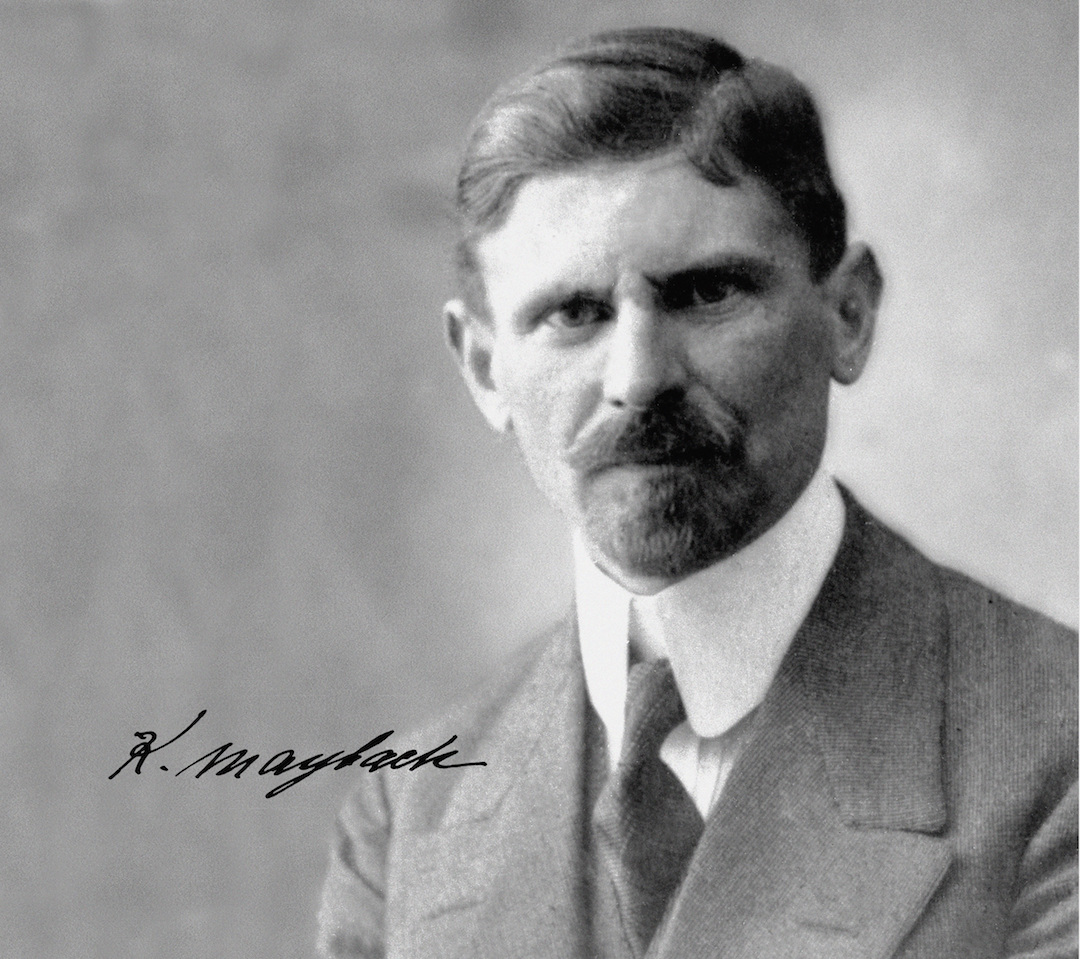
In the early 1880s, Daimler and Maybach developed a small, high-speed internal combustion engine based on the four-stroke unit they had worked on with its creator, Nikolaus Otto, at Gasmotorenfabrik Deutz AG. In 1885, Daimler and Maybach created a single-cylinder vertical engine known as ‘the grandfather clock’, and installed it into a two-wheeled wooden chassis with two additional outrigger wheels. They refined the design and within a few years, a two-cylinder version of the unit (the world’s first V-twin engine) was being employed on land, on water and in the air – its use in Daimler’s personal balloon effectively creating the first true airship.
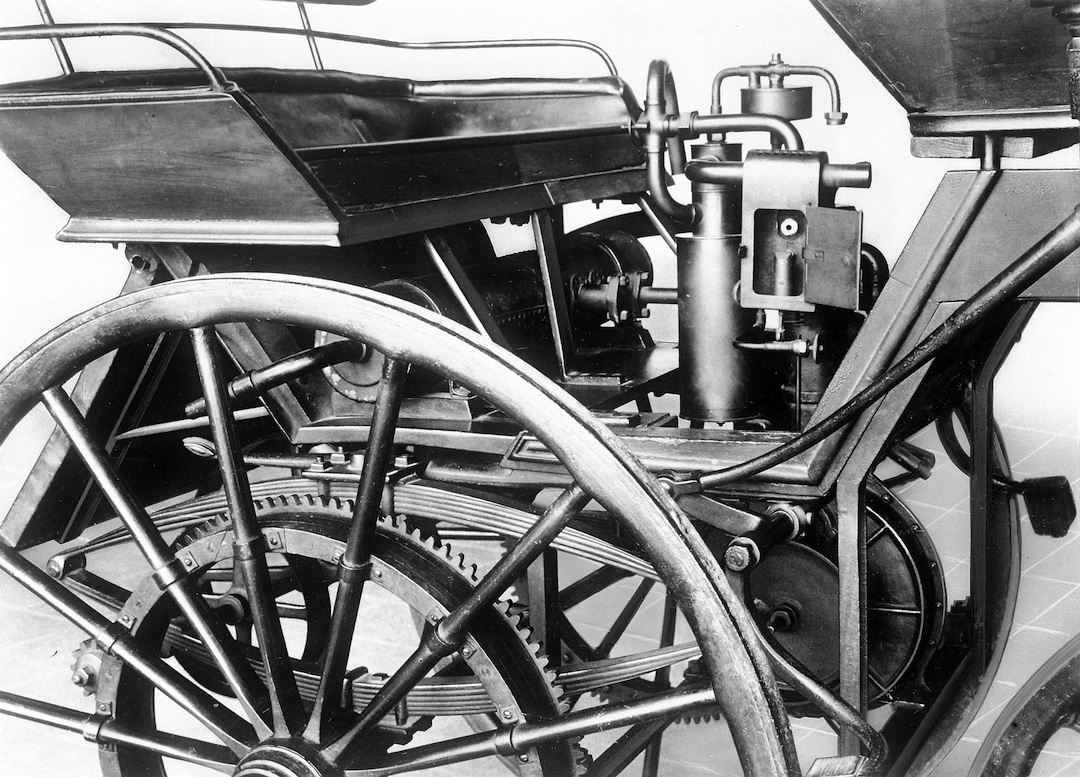
In 1890, Daimler founded Daimler-Motoren-Gesellschaft (DMG) along with Max Duttenhofer and Wilhelm Lorenz. Holding only one-third of the company’s shares, Daimler soon found himself at a disadvantage, with Duttenhofer and Lorenz able to team up and outvote him. Maybach was also unhappy with his lot. Although he had been retained as the company’s chief engineer, he did not have a seat on the board. He quit DMG within a matter of months and, secretly funded by Daimler, continued his work on internal combustion engines.
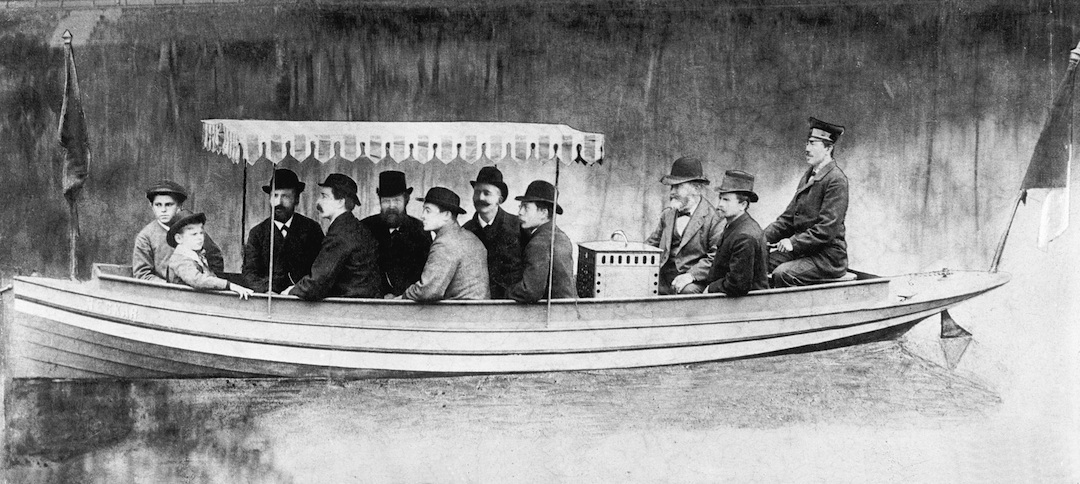
Daimler himself quit DMG in 1894, but the advent of Maybach’s remarkable ‘Phoenix’ engine attracted international interest and resulted in both Maybach and Daimler accepting lucrative offers to return to DMG in 1895. Once back in the DMG fold, Maybach played a key role in the development of the so-called ‘belt-driven car’ and a new, four-cylinder inline engine. His fertile mind also came up with a revolutionary radiator design, which he himself soon improved upon.
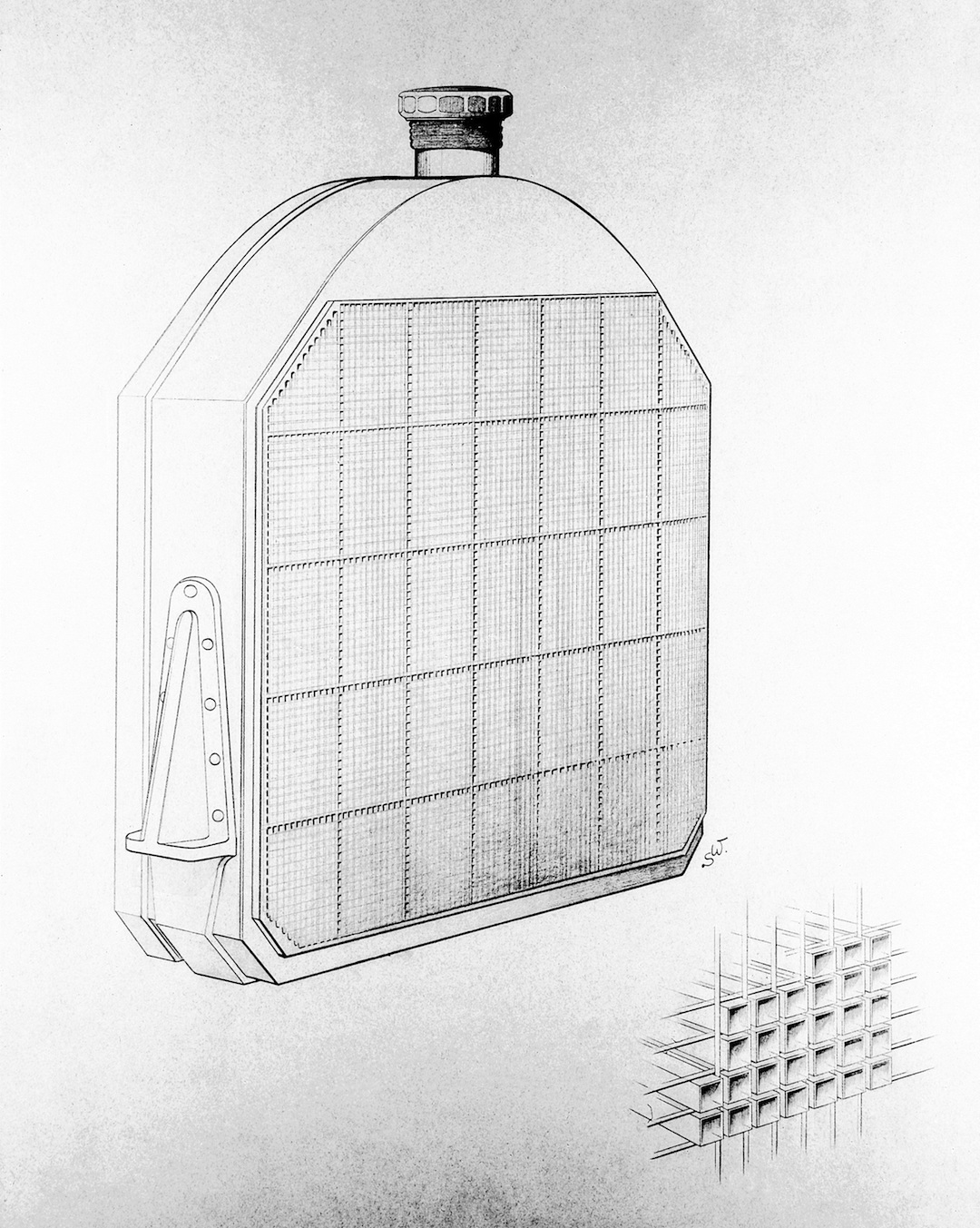
After Daimler’s death in 1900, Maybach’s role at DMG became increasingly marginalised and he eventually quit the company in 1907. However, the evolution of the airship as a means of transport presented new opportunities, and in 1909 Wilhelm Maybach and and his eldest son, Karl, formed a new company, Luftfahrzeug-Motorenbau-GmbH, as a subsidiary of airship pioneer Graf von Zeppelin’s company, Luftschiffbau Zeppelin. Originally based in Bissigen, the company moved to Friedrichshafen in 1912.
With Karl Maybach installed as technical director, this new venture saw the company concentrate on the production of engines for both airships and aircraft. Although the terms of the Versailles Treaty that followed World War 1 brought a temporary halt to such work in Germany, there was no shortage of other avenues for the Maybachs, whose company had now been renamed Maybach-Motorenbau GmbH, to explore.
Amongst the first post-war mechanical confections to emerge from the Friedrichshafen works was a six-cylinder petrol engine, known as the W1. Such was the pace of development that the W1’s power output of 46bhp was soon eclipsed by the 70bhp offered by an improved version of the engine, the W2. At this point in time, Maybach did not intend to become a car manufacturer. Accordingly, they were happy to enter into an agreement to supply 1000 W2 engines to Spyker, a Dutch car manufacturer. As fate would have it, Spyker ran into financial problems after only 150 engines had been delivered. This was the catalyst for Maybach to set about building their own car, the W3. Launched at the Berlin Motor Show in 1921 and powered by the W2 engine, the W3 was an advanced (and expensive) vehicle for its day. The one thing it didn’t come with, however, was a bodyshell: Maybach left it to individual coachbuilders to design and fit bodies to each customer’s specifications.
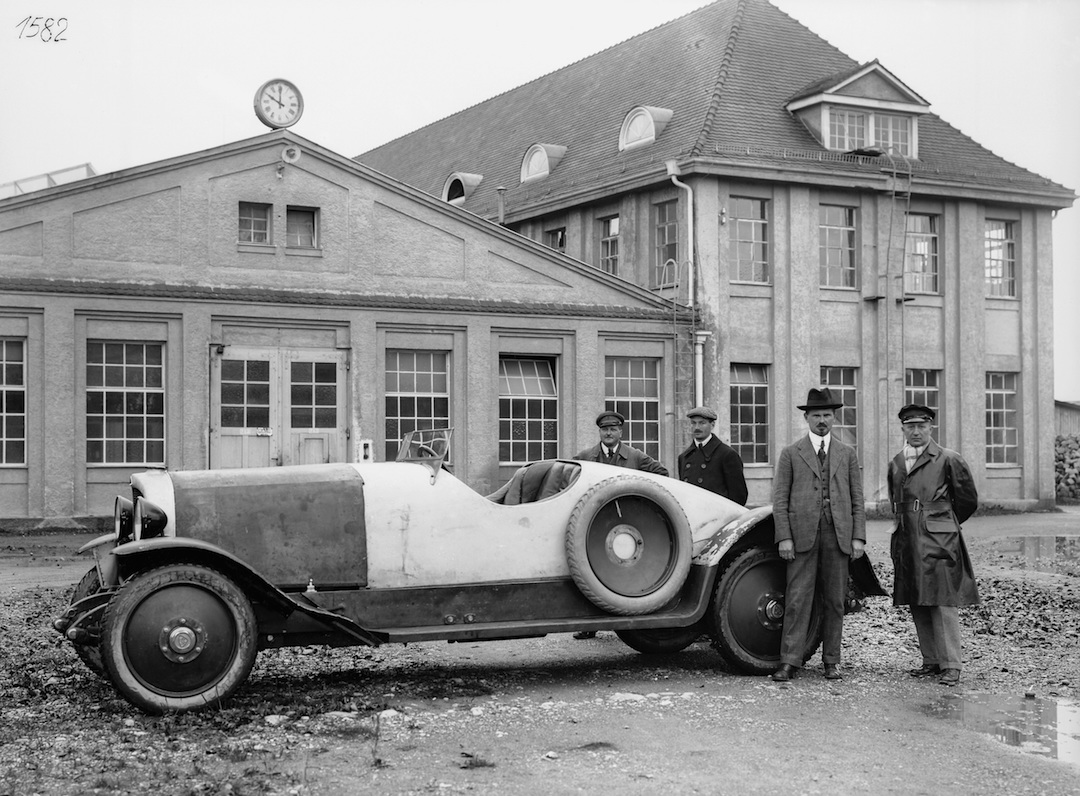
A larger model, the W5, followed in 1926. With a 120bhp, 7.0 litre engine, the W5 offered a heady mixture of advanced engineering, excellent build quality and comfort. As with the W3 before it, the W5 was available in both fixed-head and drop-head guises. A version with a new and advanced overdrive transmission, the W5 SG, appeared in 1928, offering a slightly more sprightly and sporting drive than its sibling.
By now, Wilhelm Maybach was in his 80s, but he lived long enough to see one of Karl’s greatest achievements go into production: the 7 litre V12 engine that powered the Maybach Type 12 automobile. Launched in 1929, the year in which Wilhelm Maybach died, the 150bhp Type 12 was essentially an interim model and was soon supplanted by the Maybach Zeppelin 7DS. Fitted with double overdrive transmission (and, perhaps more importantly, with vacuum-assisted brakes), the 7DS had excellent driving characteristics. It was relatively quick too, having a top speed of 93mph in spite of its considerable weight.
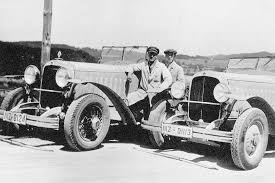
The even more capable Zeppelin 8DS followed in 1931. With a 7922cc engine that was good for 200bhp, the 8DS could attain in excess of 100 miles per hour. A 7-speed manual version with a pre-selector gearbox arrived in 1938, but few were produced before war brought production to a halt. Saloon, cabriolet and open-top tourer versions of the DS7 and DS8 were built, but with prices running at about three times the cost of an average detached house, only about 200 of the V12-engined cars were produced.
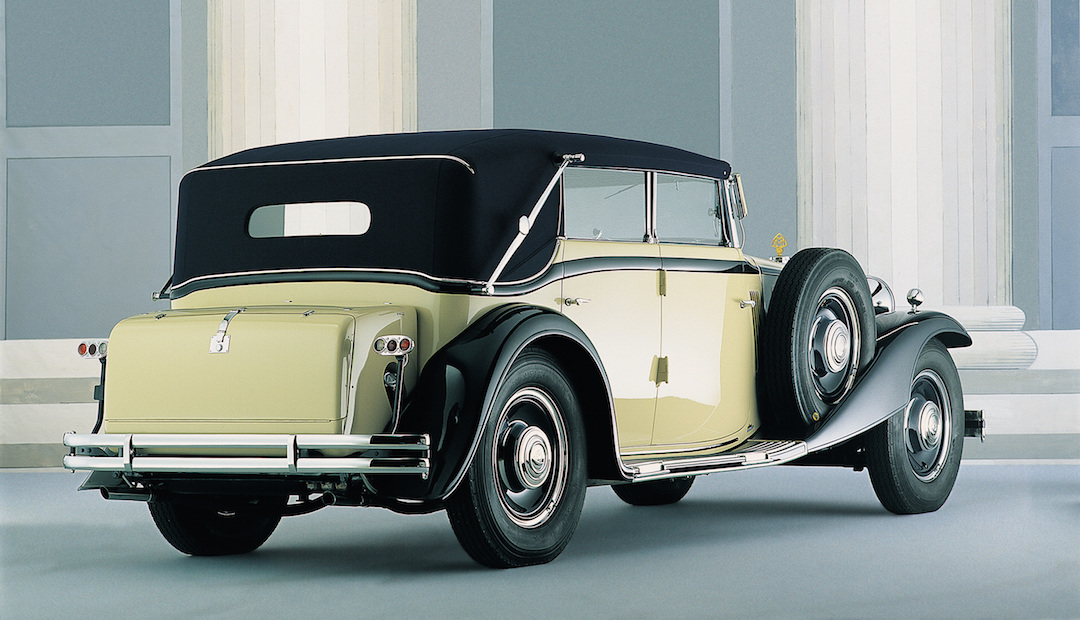
The DS8 may have been the flagship of the Maybach range, but the company continued to produce technically advanced six-cylinder cars alongside the V12 models. A new W6 model, of similar appearance to the Type 12 but with the same six-pot engine as the W5, was introduced in 1931, and a version with double overdrive transmission, the W6 DSG, followed in 1934. In the same year, the W6 DSH (‘double six half’) model was also launched. As the name suggests, this variant was equipped with a new six-cylinder powerplant which was closely related to the V12 unit.
1935 saw the introduction of the SW range of six-cylinder cars. With swing-axle rear suspension and yet another new six-cylinder engine, initially of 3.5 litres, the SW range sold in much larger numbers than the V12 models. Production finally ceased in 1941.
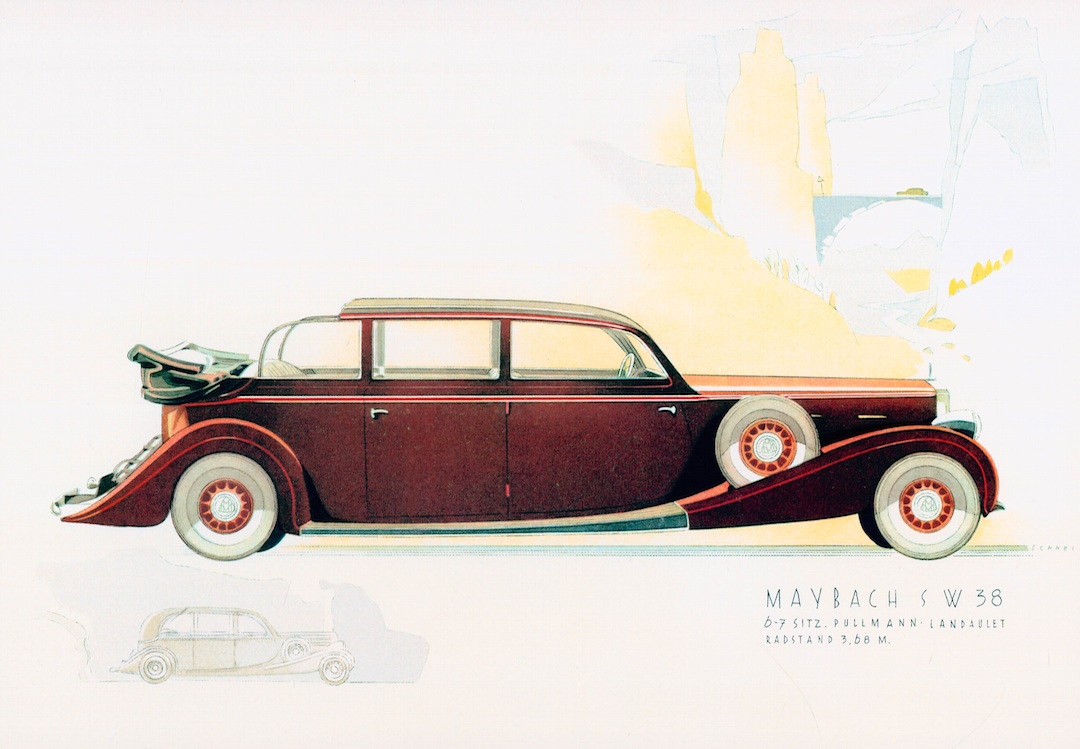
In spite of having entered the automotive market, Maybach had continued to build engines for a variety of other uses, including high-performance diesel units for railcars. So when a diesel-powered rail service commenced between Berlin and Hamburg in 1933, thereby becoming the world’s fastest regular rail connection, it was no surprise to find that it was powered by Maybach engines.
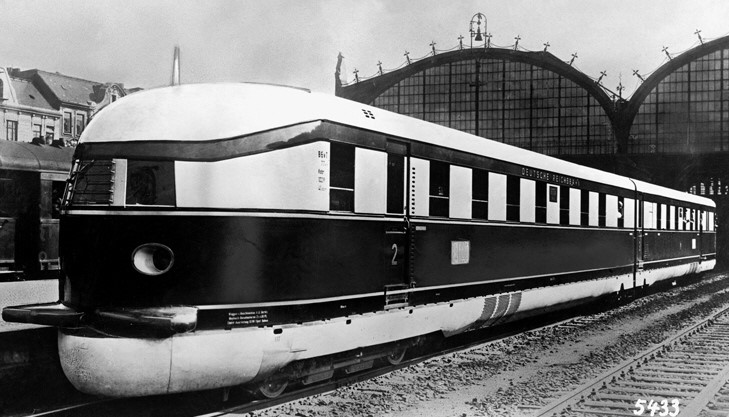
Maybach powerplants also found their way into military vehicles as well, the company having been commissioned by the Wehrmacht to produce tank engines. Indeed, the majority of German tank designs used in world war 2 relied on Maybach power. Naturally, this made the Maybach factory a prime target for allied bombers, the result being that most of it lay in ruins when the guns finally fell silent in 1945. Engine production resumed at Friedrichshafen after world war 2, but car manufacture did not.
Having retired from the company in 1952, Karl Maybach passed away during a visit to the factory in 1960. Daimler-Benz (as it was then known) subsequently acquired Maybach-Motorenbau GmbH and, in 1969, renamed the company MTU Friedrichshafen. Following several changes of ownership in the 21st century, the company, now known as Rolls-Royce Power Systems AG, is currently a wholly-owned subsidiary of Rolls-Royce Holdings. It continues to manufacture diesel engines for rail, marine, agriculture and other applications.
It may no longer own the former Maybach premises, but Daimler continues to own the rights to the Maybach brand, and recent years have seen its return to the automotive world. The process started in 1997, when a Maybach concept car, a luxurious, technologically advanced limousine, was shown at the Tokyo Motor Show. At almost 5.8 metres long, the concept car was appreciably longer, wider and taller than the long-wheelbase version of the Mercedes S600 on which it was based.
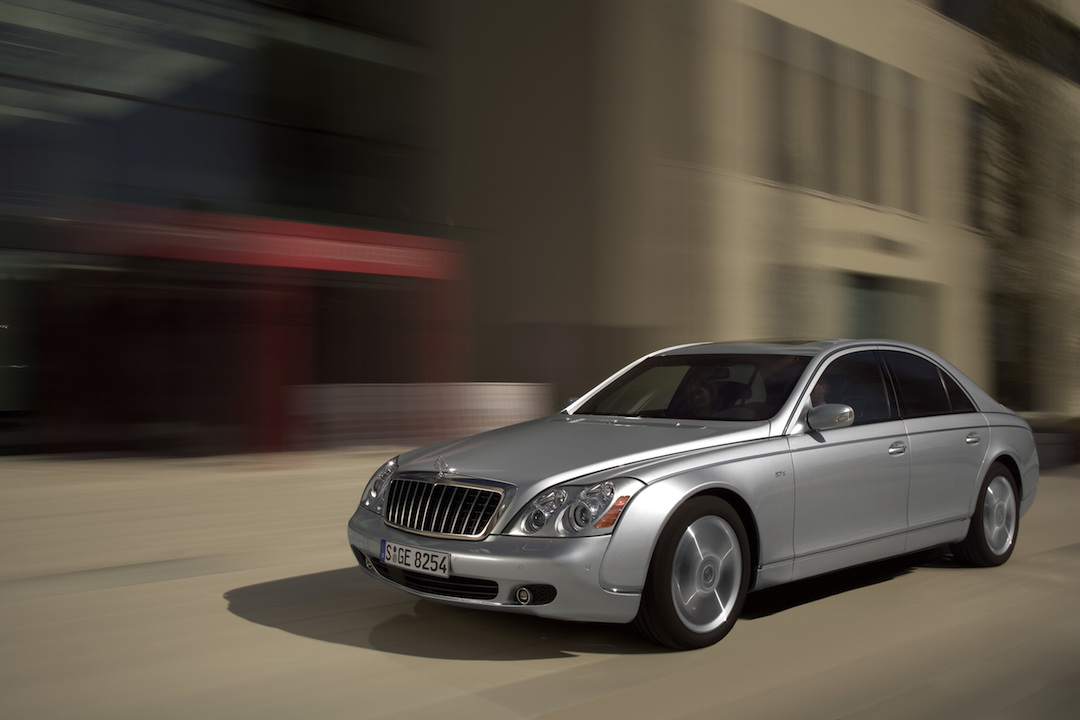
Having thus tested the water and with BMW having purchased Rolls-Royce in 1998, Daimler decided to return the Maybach name to showrooms. In 2002, the ultra-luxurious and hugely expensive Maybach 57 and 62 models were launched. Like the concept car, the 57 and 62 were based on a stretched Mercedes S-Class platform, with the 57 being 5.7 metres and the 62 being 6.2 metres long. Both cars were powered by twin-turbo, 542 bhp versions of Mercedes’ M285 V12 engine.
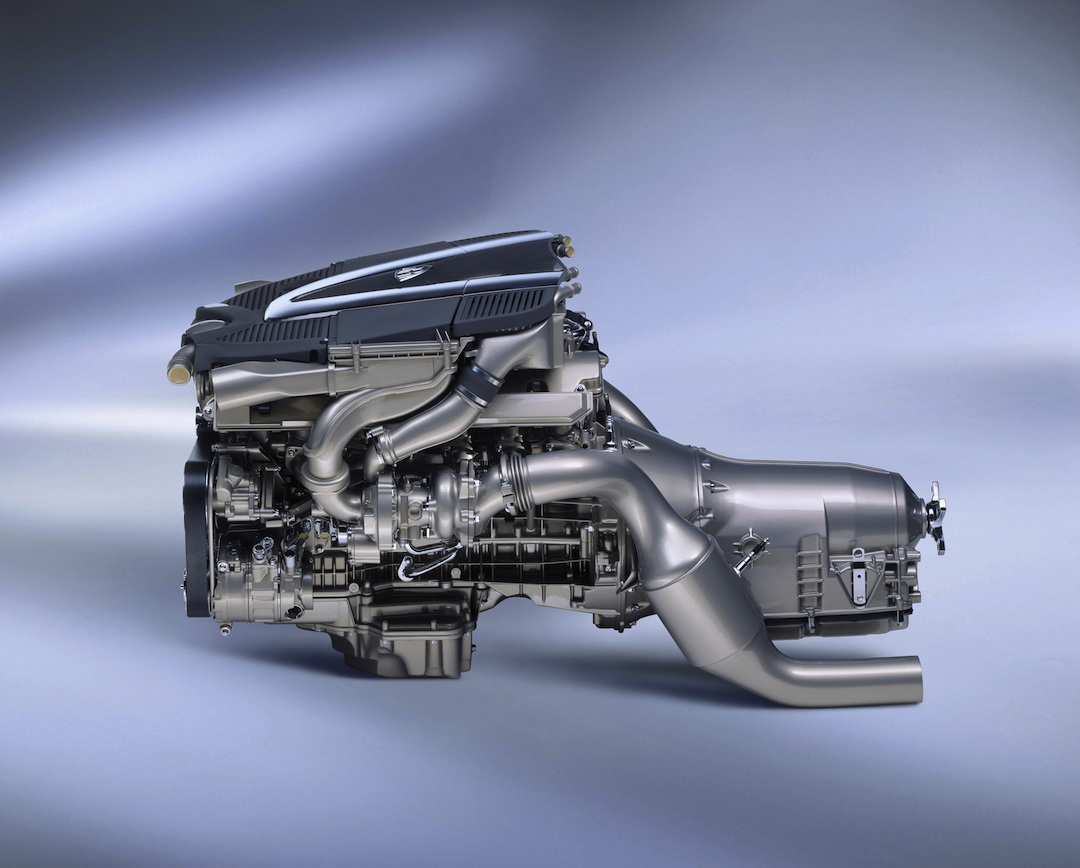
In spite of their size and weight (even the 57 weighed over 2700 kilogrammes), the 57 and 62 were both capable sprinters, being able to cover the 0-62 mph dash in a whisker over 5.0 seconds. The later 57S and 62S models, with 6.0 litre, 603bhp engines, were even more rapid.

In 2008, the Maybach 62 Landaulet was introduced. Based on the 62S, the Landaulet’s front seats were separated from the rear passenger compartment by a power-operated, variable opacity window and a retractable soft-top covered the rear compartment. Only eight examples were built.
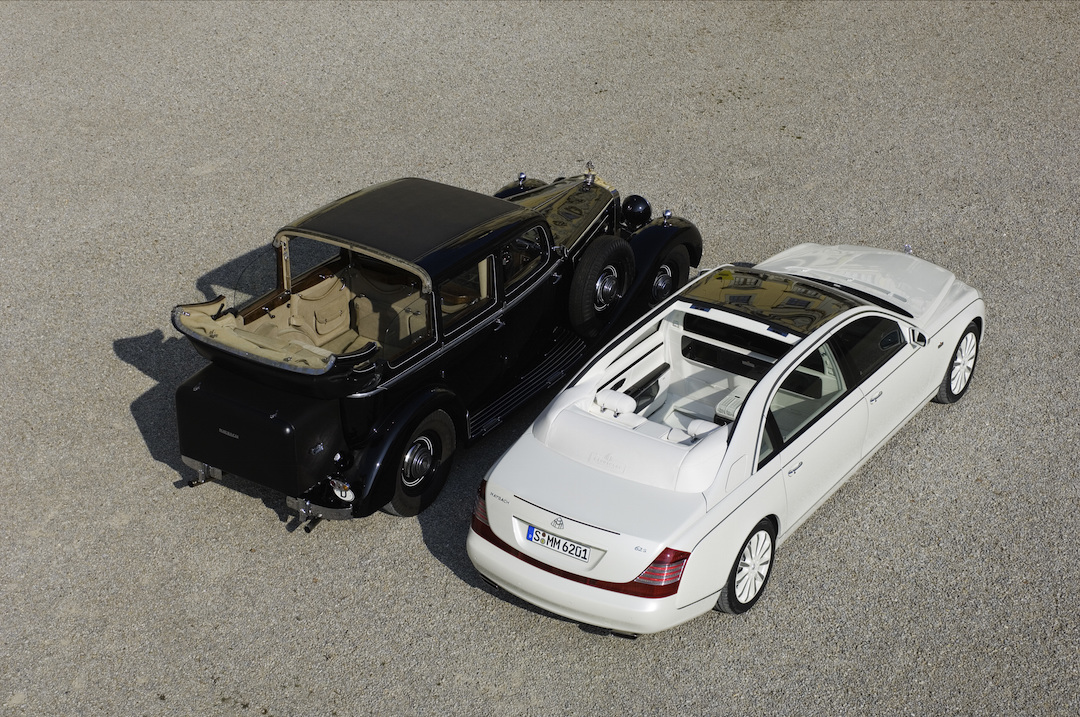
Daimler had hoped to sell 3000 Maybachs a year, but actual sales figures came nowhere close to that figure. With the company making a substantial loss on every Maybach built, production ceased in December, 2012, after a total production run of around 3000 cars.
Having revived the Maybach name, Daimler decided not to return it to the annals of history but to use it to denote luxury versions of the Mercedes S-Class in the same way that AMG branding is applied to high-performance variants of the Mercedes model range. And since 2015, the Maybach name once more adorns expensive, luxurious and powerful cars – just as it did in the company’s heyday.
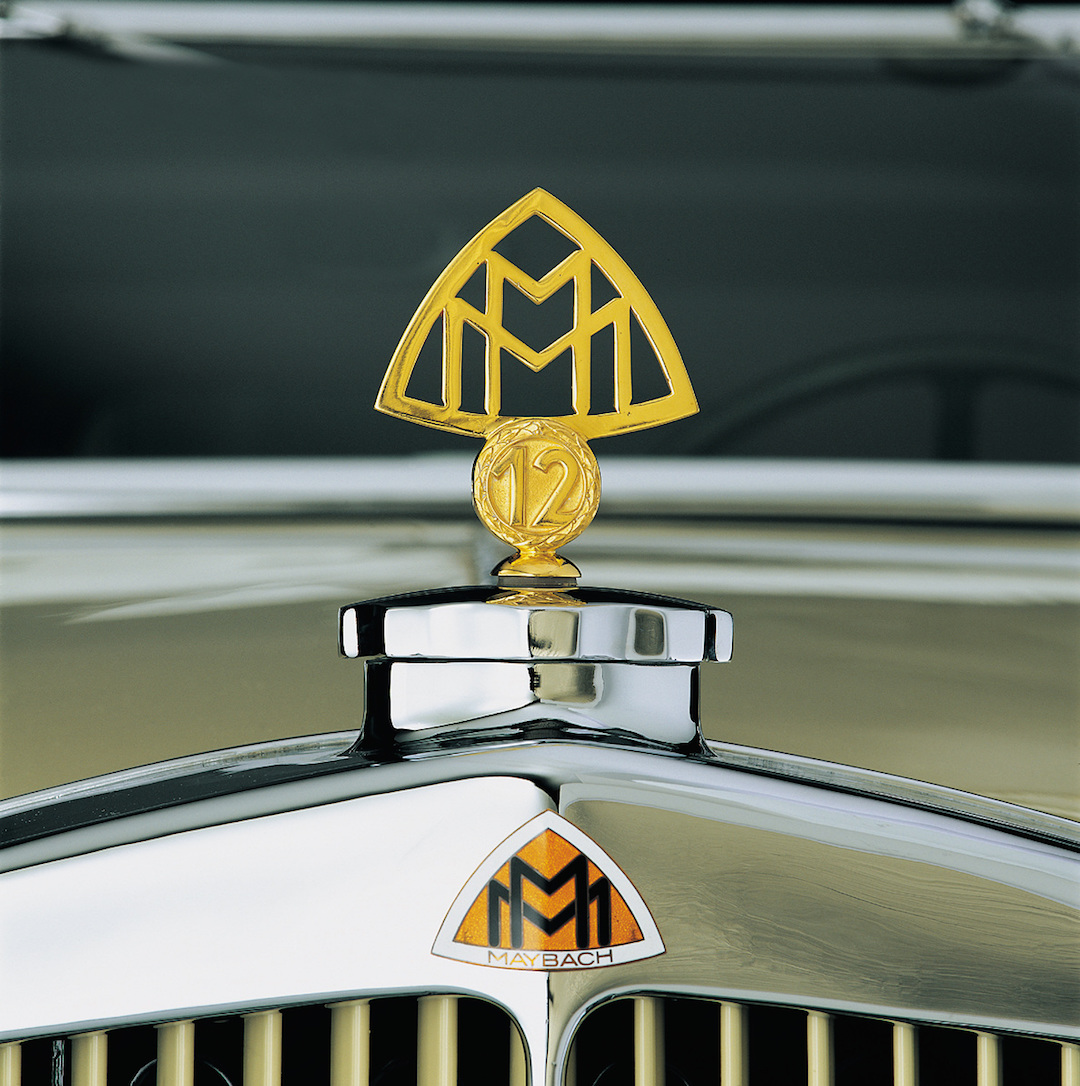
CLICK TO ENLARGE










